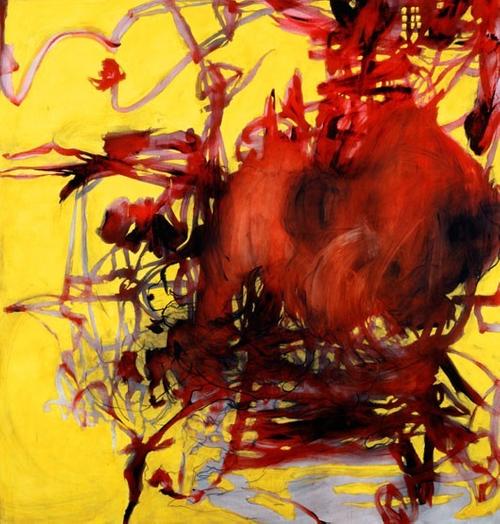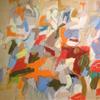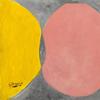Whitney to Unveil Transformative Gift
- NEW YORK, New York
- /
- October 08, 2015

Celebrating an extraordinary and transformative gift of more than 850 works collectively given to the Whitney Museum of American Art and the Centre Georges Pompidou by Thea Westreich Wagner and Ethan Wagner, both institutions will present consecutive exhibitions featuring a selection of works from the gift. The Whitney’s presentation of Collected by Thea Westreich Wagner and Ethan Wagner opens on November 20 in the Museum’s new downtown home and runs through March 6, 2016. The Pompidou’s exhibition follows the New York presentation, opening in Paris on June 9, 2016. The exhibition is organized by Elisabeth Sussman, curator and Sondra Gilman Curator of Photography, Whitney Museum of American Art, and Christine Macel, chief curator and head of the department of contemporary and prospective creation, Centre Pompidou, with Elisabeth Sherman, assistant curator, Whitney Museum of American Art. An illustrated catalogue documenting the collection will accompany the exhibitions.
Adam D. Weinberg, the Whitney’s Alice Pratt Brown Director, noted, “We are delighted to present this exhibition in honor of the magnanimous gift of art we received from Thea Westreich Wagner and Ethan Wagner—one of the largest in the Whitney’s history and a tremendous statement of support for the Museum and its new building. Thea and Ethan are among the most astute collectors of late twentieth-century and early twenty-first-century art and their gift adds enormous strength to the Whitney’s collection. We are deeply grateful to them and are pleased to be collaborating with our friends at the Pompidou.”
This exhibition celebrates this remarkable gift as well as the perspicacious collecting of Westreich Wagner and Wagner by exploring several of the ideas and themes that recur in the collection across generations, mediums, and nationalities: the rise of mass media and the darker side of advertising; the adoption of street style and the punk aesthetic; the decorative arts and their ability to communicate often political messages; reflections on how technology has radically altered commerce, communication, and industry; and the artist as celebrity, among others.
Westreich Wagner and Wagner began collecting art in the 1980s and continue to collect today. They have consistently focused their attention on emerging artists, acquiring works soon after they were made, often straight out of the artists’ studios. Many of these artists were relatively unknown at the time, but have since become some of the most heralded figures of their generation—notably Robert Gober, Jeff Koons, Richard Prince, Cindy Sherman, and Christopher Wool. The couple has also pursued a specific interest in photography, building deep holdings of the work of landmark figures such as Lee Friedlander and Robert Adams while also acquiring photographs by a diverse range of artists, including Liz Deschenes, Philip-Lorca diCorcia, Annette Kelm, and Josephine Pryde. Continuously motivated by the learning challenges posed by new expressions and ideas, the two have examined the world around them through the eyes of the artists whose work they follow and acquire; their collection is a unique, personal reflection on the “contemporary moment” as it has evolved over the last several decades.
The gift to the Whitney encompasses nearly five hundred and fifty works, representing a cross section of mediums, by more than seventy-five artists and collectives. In some cases works are by artists who will enter the collection for the first time and in others they add depth to our holdings of artists we have championed. The Pompidou is receiving more than three hundred works by some forty European artists. While the collection is divided between the two institutions, with works by American artists going to the Whitney and by non-American artists going to the Pompidou, the exhibitions draw from both gifts aiming to reveal the international dialogue intrinsic to contemporary art.
Ms. Westreich Wagner and Mr. Wagner noted, “We are thrilled that audiences will be able to experience these exhibitions at the Whitney and the Pompidou. These are works by artists whom we deeply admire and want to share with the world.”
Among the artists in the Whitney exhibition are Robert Adams, Diane Arbus, Larry Clark, Tony Conrad, Dan Flavin, Lee Friedlander, Robert Gober, Jeff Koons, Zoe Leonard, Steven Parrino, Richard Prince, Cindy Sherman, Lawrence Weiner, Christopher Williams, and Christopher Wool. A considerable number of the works in the exhibition were produced by younger artists over the last two decades, including Anne Collier, Liz Deschenes, Gareth James, Jutta Koether, Sam Lewitt, Klara Liden, Lucy McKenzie, Philippe Parreno, Josephine Pryde, Eileen Quinlan, Reena Spaulings, Frances Stark, Simon Starling, Cheyney Thompson, and Danh Vo.
Among the works to be shown in the exhibition are: Robert Gober’s The Ascending Sink (1985); Bernadette Corporation’s Creation of a False Feeling (2000); Richard Prince’s Nancy to Her Girlfriend (1988); Diane Arbus’ Puerto Rican woman with a beauty mark, N.Y.C. (1965); Larry Clark’s 42nd Street (1979); Charline Von Heyl’s Boogey (2004); Christopher Wool’s Incident on 9th Street (1997); Jutta Koether’s Demonic Options (large format #1) (2010); Matias Faldbakken’s Untitled (Locker Sculpture #01) (2010); Philippe Parreno’s White Marquee (2008); Philippe Parreno and Rirkrit Tiravanija’s Puppets (2009); Ken Okiishi’s (Goodbye to) Manhattan (2010); Gilbert and George’s Up (1980); David Robbins’ Talent (1986); Danh Vo’s 16:32:15, 26:05 (2009); Lucy McKenzie’s After G. Hobe, Salon Library for the Great Exhibition, 1902, Turin (2006); Laura Owens’ Untitled (1998); Liz Deschenes’ Green Screen #7 (2001); Sam Lewitt’s Weak Local Lineament (ICF 01) (2013); Hito Steyerl’s Red Alert (2007); Antoine Catala’s Image (2012); and Cheyney Thompson’s Chronochrome 11 (2011).
















